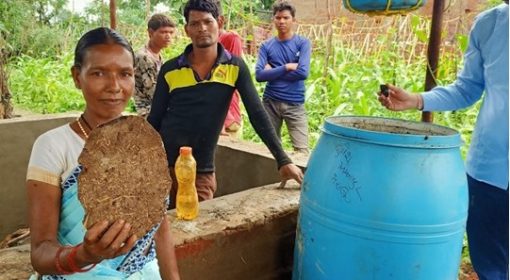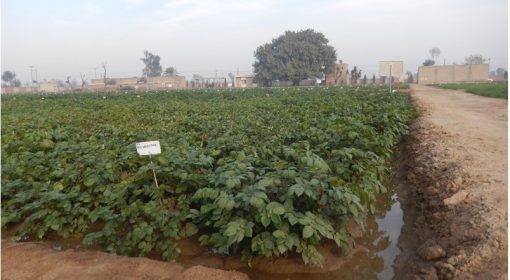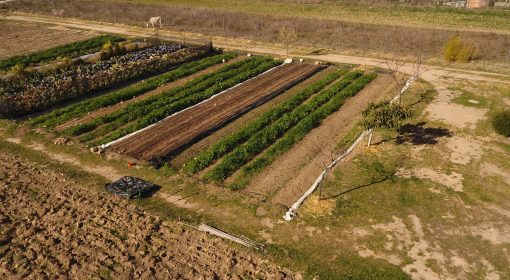Reinier Veldman (MetaMeta) and Mohammad Abdul Salam (SPO Pakistan and FBLN Pakistan)
As part of the Newarbi-project (New Water Rights for Basin Management and Inclusivity in Spate Irrigated Areas of Pakistan), the team recently conducted Iron and Zinc spraying trials in Chickpea crops, which are commonly cultivated in Spate-irrigated areas. The trial’s objective was to determine the extent to which Iron and Zinc spraying could enhance harvest yields. Moreover, the team sought to explore whether Iron and Zinc spraying could effectively address the micronutrient deficiencies in staple foods by increasing the Iron and Zinc-content in commonly grown crops. This is very important as Iron is essential for red blood cell function and production and zinc is crucial for fetal growth, vision, and skin, nails, and hair, respectively. Micronutrient deficiency in crops lead to a nutrient-poor diet, without a deficit in energy intake thus can result in what is called ‘Hidden Hunger’.
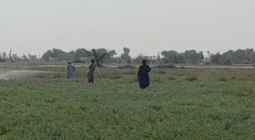
The chickpea crop spray trial was conducted on two farms in the Union Councils of Jalal Khan and Naushara, Tehsil Bhag, Baluchistan, Pakistan. The initiative was undertaken as part of the Flood Based Livelihoods Network (FBLN) project in association with the Strengthening Participatory Organization (SPO) Regional Center of Quetta.
Before commencing the trial, soil tests were conducted at six different locations within the project area to assess the soil’s fertility and determine the levels of Iron and Zinc. The results of these tests revealed that the soil contained adequate levels of Iron and Zinc. Subsequently, the trial aimed to evaluate the efficacy of the spray in promoting enhanced growth and crop yield.

The specific focus of the trial centered on assessing the impact of the spray on chickpea yields. Chickpeas, precisely the Balksar variety, were selected due to their widespread household consumption and significance in local trade within Bhag Town. Two locations within the project area were designated for the trial, with 50 acres allocated. Half of this area (25 acres) was treated with the Iron and Zinc spray, while the remaining 25 acres served as a control group without any treatment.
The spray utilized in the trials was a formulation called the Guerilla mixture, provided by Vital Agri Nutrients, a Pakistan-based company. This particular mixture consisted of 200ppm Iron and 100ppm Zinc. It should however be noted that this mixture is a synthetic fertilizer, a less sustainable option than biofertilizers. One liter of the Guerrilla mixture was diluted with 100 liters of water to prepare the spray. For each acre of land, 100 liters of the diluted spray solution were applied, equivalent to 250 liters per hectare. During the application process, farmers employed two different methods. The first involved using a traditional sprayer carried on the back, allowing for targeted spraying of the leaves and stems of the crops. Alternatively, one of the farmers had access to a more sophisticated apparatus known as a long-tube spray machine. This machine comprised a 220-liter drum, where the spray solution was prepared, and a small water pump to transport the spray through a long tube. The advantage of the long tube spray machine was that it enabled the farmer to walk into the field without carrying the weight of the spray and eliminated the need for frequent refilling of the sprayer.
The spray was applied to the leaves and stems of the plants. However, it can also be applied to the soil directly. However, the spray also contains nitrogen and adding more nitrogen to the soil than plants can use can contribute to bacteria converting this into nitrate which can then be flushed out of the soils in runoff and pollute groundwater and streams. Because in this trial the dose of NPK is very small, the risk of these side effects is also small. Also, the spray is applied during the dry season, this also limits the risk of rainwater flushing out the nitrogen to groundwater or streams.

The trial was initiated in October 2022, marking the beginning of the cultivation of chickpea crops. These crops were diligently nurtured, carefully tended to, and closely monitored until their eventual harvest in April 2023. The spray application took place during this critical growth period (8th of March, 2023). This timing coincided with the flowering stage of the crops, ensuring optimal uptake of Iron and Zinc nutrients. By applying the spray at this stage, the farmers aimed to maximize the benefits and enhance the overall productivity of the crops.
An opportunity to apply the spray twice, with a suitable interval between applications, could have provided even better coverage and insurance for receiving the necessary nutrients throughout the fruiting stage.
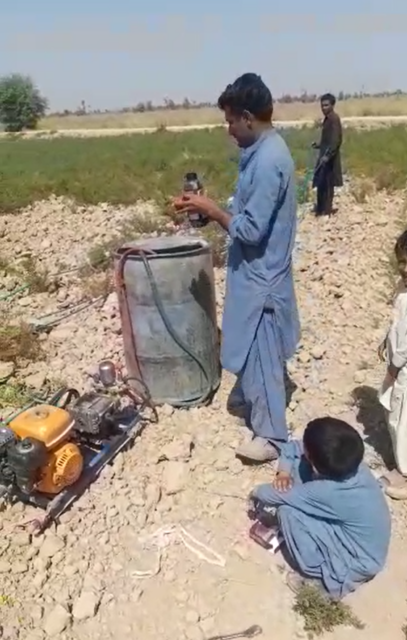
The outcome of the trial showed remarkable results. Typically, chickpea crops in the region produce yields ranging from 600 to 700 kilograms per acre, with a seed application rate of 18 to 25 kilograms per acre. However, after the application of the Iron and Zinc spray, there was a significant boost in yields per acre. The trial data revealed an average increase of 100 to 120 kilograms per acre, showcasing a substantial improvement. These findings strongly indicate that the spray application positively impacted crop productivity. After the success of the spray trial, hope and enthusiasm were instilled among farmers, encouraging them to adopt improved agricultural practices. One of the participating farmers decided to invest in a long tube spray machine worth Rs. 60.000 (almost 200 euro). The farmer now lends his spray machine to fellow farmers in their villages to spray chickpeas.
The recorded increase in yields is of great significance, as it signifies the potential of the Iron and Zinc spray to contribute to the agricultural landscape of spate-irrigated areas. To what extent the spray enhances the Iron and Zinc content in the crops has to be further examined .
